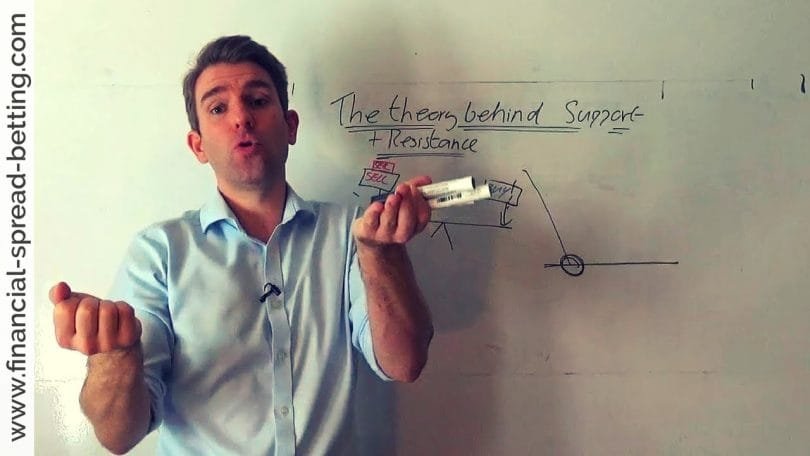The reason that support and resistance work, and that the price will keep on touching and rebounding off them, is down to the psychology of the market participants. There is no ‘magic’, just commonsense. One explanation of why it works so well involves thinking of the psychology of the traders in the market. Now there are many reasons that traders will buy or sell, but they are usually driven by the profit motive – either to position themselves to make more money, or to try to ease the pain of losing money for a trade that they have already taken out. For the sake of this discussion, we’ll think of the people making the trades as three groups –
- People who have already bought the stock, and are ‘long’
- People who have shorted the stock expecting a downturn, the ‘shorts’, and
- People who haven’t made up their minds which way to trade, the ‘undecideds’
Imagine that a stock has been trading between two levels, a support at the bottom of the price range, and a resistance level at the top. When the price is rising off a support level, they would be thinking like this –
- The longs are congratulating themselves on being smart traders, and wishing they’d bought more as they would have been able to make more of a killing. They may be thinking that they will buy more if the price goes back down to that level.
- The shorts are thinking that they may be wrong, and are hoping for the price to drop back down. If it does, then at least they can buy to cover their position, and get out of the trade without losing so much.
- The undecideds are thinking that they may have missed the boat by hesitating, and lost out on a winning trade. They make their minds up that they will buy shares if the price should come back down, and not miss out a second time.
So all three groups are looking at the support level, and deciding to buy if the price comes back down to it. While this is an oversimplification of the psychological complexity of trading, you can see where the logic of this is leading. The demand for shares by all three market participants will, by the laws of supply and demand, force the falling price to reverse and go back up. This explains why a support level can work so well and so often.
What if this does not take place? Perhaps for their own reasons some of the market participants are not convinced, and so the demand is not sufficient to keep the price up.
What if the price falls through the support level? Suddenly, as they realize that the price isn’t stopping and reversing at the support level, everyone’s reaction will change. The thought patterns will be modified, so that –
- The longs think they must have made a mistake. Depending how far the price falls, the longs may decide to accept their loss by selling up and closing the trade. But it is hard to do that, so they may hang on to see if they can sell at the support level, if the price comes back up.
- The shorts are congratulating themselves on anticipating the market move correctly. They may be wishing that they had taken a larger short position, and thinking that if the price goes back up to the support level, maybe they’ll short (sell) some more shares.
- The undecideds think that now they have missed out on shorting the shares, and may be kicking themselves for being so indecisive. This time they may resolve to sell short some shares if the price would only come back up to the old support level.
So suddenly, instead of buying at the old support level, and thus making the price bounce back up, everyone is thinking of selling if the price gets back up there. If they all do that, the laws of supply and demand say that the price will go down. The old support becomes the new resistance, not by magic but by human nature.
You can see how you can apply exactly the same type of logic to a resistance level. Again, once it is distinctly broken, and the market participants accept that fact, their view of the level changes and it becomes a new support. Technical analysis is a study of human nature more than a mechanistic process.

